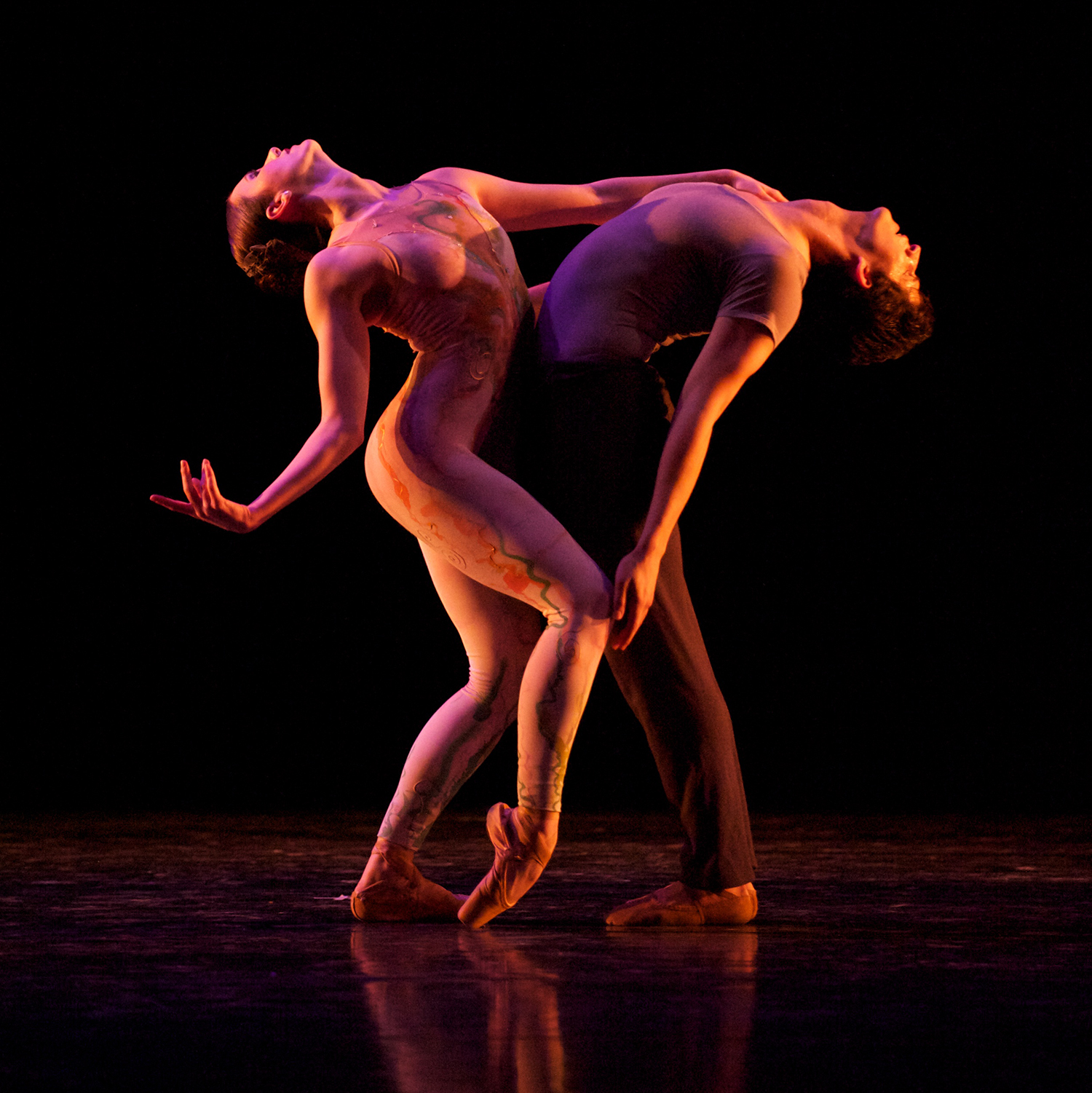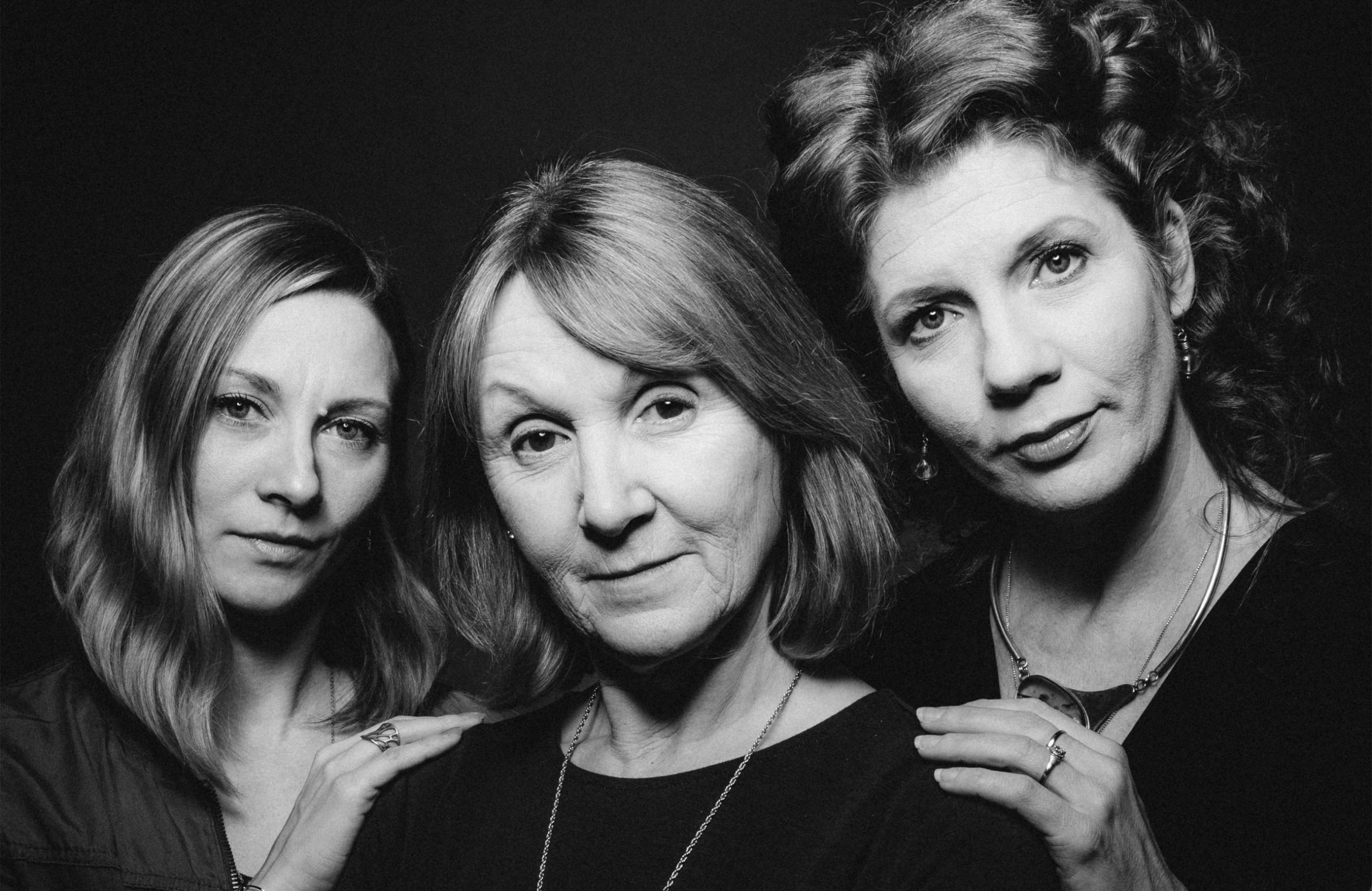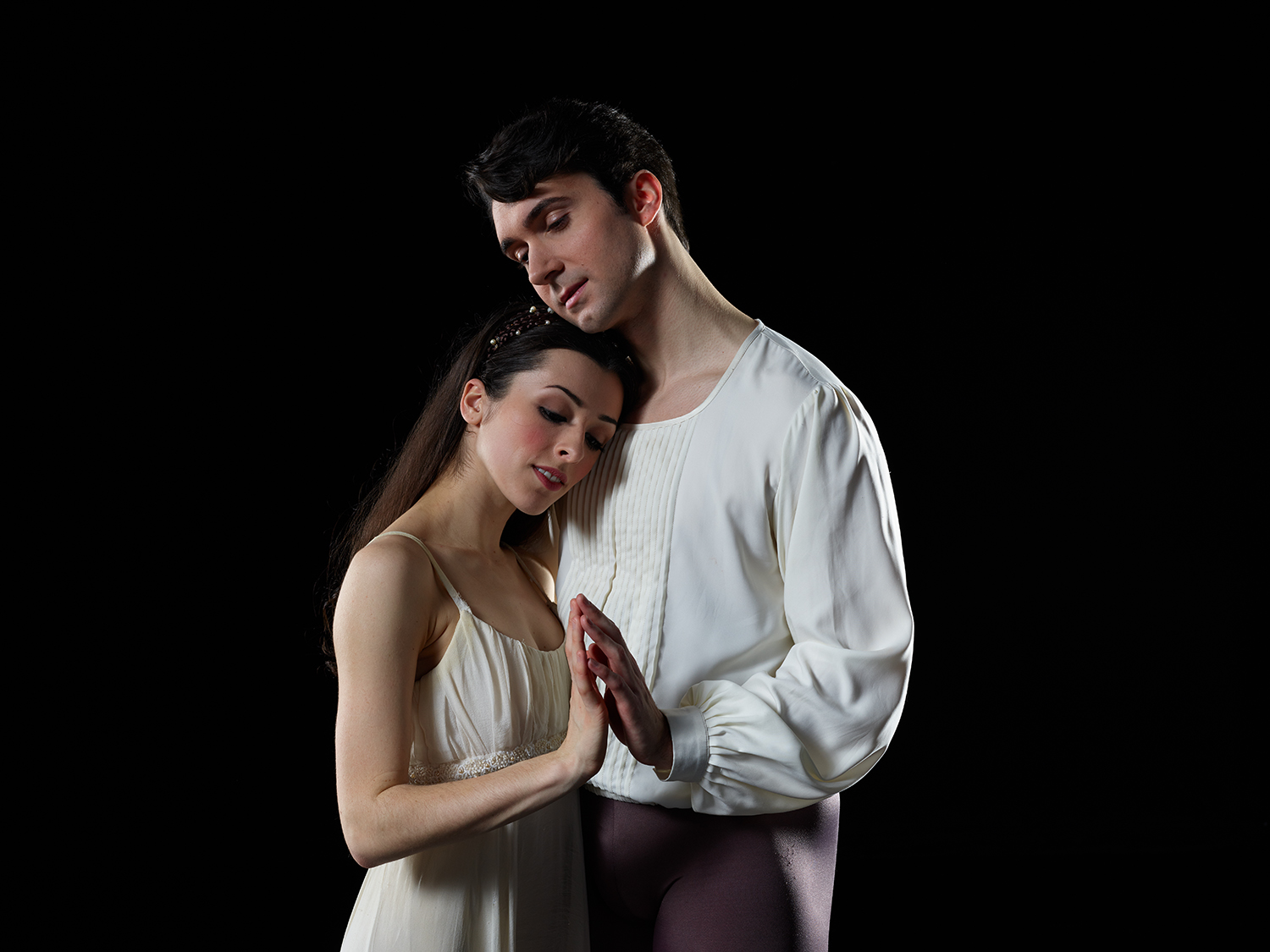Bridging town and gown through dance By Gary Ferrington There has often been a social…
It’s Now Easy Being Queen
After years of dreaming and ideation, Eugene Ballet’s The Snow Queen premiered this weekend, a dazzling spectacle of stagecraft that was most compelling in its moments of pure, unadorned dance.
It’s the largest production in Eugene Ballet Company’s 38 years, featuring the longest commissioned score — by Portland composer Kenji Bunch — in Oregon’s history. Every bit of the artistic effort, from sets to costumes, props to animations, was labored over by more than 150 artists and designers from the local community.
EBC clearly has poured its heart into this story about a girl name Gerda whose friend Kay disappears one day, inspiring her to go on a mission to find him.
Bunch’s score plays with the polarity between the frozen fortress where the Snow Queen (an icy Danielle Tolmie) dwells and an organic, romantic pastoral, representing the love between Gerda (a wistful Yuki Beppu) and Kay (danced devotedly by Hirofumi Kitazume).
Played enthusiastically by Brian McWhorter’s Orchestra Next, Bunch’s score tests the audience. Often atonal and percussive, like an ice cube cracking in a warm glass of water, this isn’t emotionally driving 19th-century romantic ballet music. The score is a new hybrid, something cinematic at times — and this could be an issue with the acoustically cavernous Hult space — but sometimes, too, the music seems a bit quiet, a bit too pensive, to fully support the choreography.
With such tremendous financial support, the artistic team, under technical director Barry Rodgers, attempts many visionary technical feats. A few ideas might need a bit more working out: A gorgeous chrysalis-like gazebo in the Conjurer Woman’s garden (the part played by a strong Victoria Harvey) has Plexiglas windows that blindingly reflect the theater’s lights.
Animated projections by Don Carson initially create wonder, but when accompanied by dance that maintains dynamic stasis, or with no dance at all — as during Bunch’s moody overture — they might leave the audience more restless than they would have been without.
And rather than relying on traditional painted backdrops, the production uses projections to create changing scenes. But these images — such as the bucolic rolling hills — seem somehow out of focus. Is their blurriness an artistic choice?
Hats off to costumer designer Jonna Hayden’s small army of stitchers and makers whose confectionary compositions lend lightness and shadow in equal measure. Snowflake guards! Crows! Gypsies! There is no lack of variety.
At times, however, the costumes seem to be wearing the dancers — such as the scene in the Conjurer’s garden — where dancers in fancifully massive dresses and enormous wigs seem quite encumbered.
Crowd-pleasing effects — like a terrific crow puppet by Bill Burback and Shaunna Durham — against an animated sky, take flight. One qualm: Perhaps the crow’s wings should consistently beat in unison and oh, how one wishes the bird’s head could articulate, swivel from side to side to look at the audience, with that fiercely crow-like gaze.
It’s great to see Beth Maslinoff as the Princess, the dancer recuperated from injuries, with Antonio Anacan commanding as the Prince. Suzanne Haag as the Robber Girl — an ad hoc queen of the gypsies — shines.
The second act is where The Snow Queen finds its rhythm and narrative strength. It’s where we start to feel for Gerda and Kay. As Gerda is tossed around, woebegotten and afraid yet persevering, she becomes a compelling protagonist.
The most contemporary moment comes near the end, when Kay, unshackled from the Snow Queen’s spell, rediscovers his humanness, healing safe in Gerda’s arms. In this pas de deux, choreographer Toni Pimble, who is artistic director of the company, finds a subtle way to write the future as Gerda supports Kay, helping him to balance, turning him, holding him.
Sara Stockwell, as the enchanting Rose, adds magic as the piece unwinds in an approachable trio that finds solace in the fortitude of nature itself.
A modern telling of Hans Christian Andersen’s classic tale, EBC’s The Snow Queen is an immeasurably commendable effort, and, in this political moment, an audacious act of hope.
About the Author
Rachael Carnes has written for Eugene Weekly as well as The Stranger in Seattle, since the mid-nineties. Covering dance, theater, performance art as well as human interest stories, Rachael enjoys meeting new people and seeing their creative process in action. As the founder of a local non profit, Sparkplug Dance, she spent 15 years teaching movement to kids in our community who juggle any number of risk factors, and now dedicates most of her time to supporting Arts Integration in area Middle Schools, through her work with the Educational Policy Improvement Center.
Article Originally Posted On Eugene Weekly




